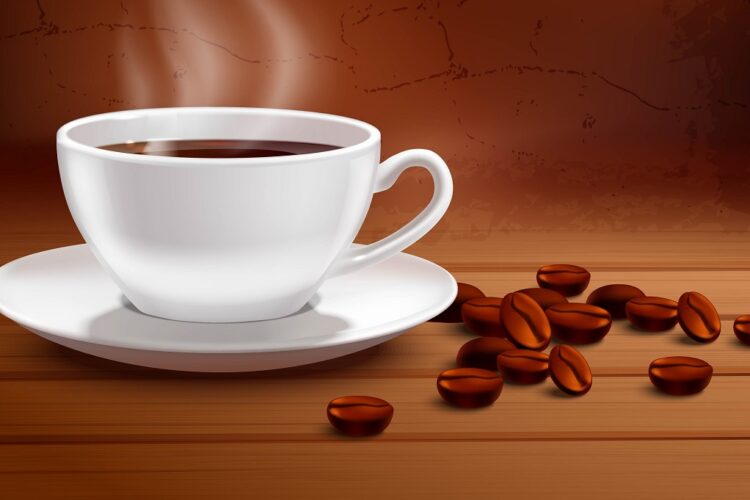Coffee lovers everywhere understand the importance of a well-brewed cup of joe. From selecting the perfect bean to finding the best brewing method, the quest for the perfect cup of coffee is never-ending. However, what many fail to consider is the optimal temperature at which to drink their coffee. While it’s commonly understood that coffee should be brewed at a specific temperature, the temperature at which it’s consumed can have a significant impact on its taste and overall quality.
In this blog post, we’ll explore the science behind the optimal coffee drinking temperature and provide tips for achieving the perfect cup every time.
What is the Optimal Temperature for Drinking Coffee?
While coffee enthusiasts often focus on the best temperature for brewing coffee, the temperature at which coffee should be consumed is equally important. After all, drinking coffee at a lower temperature than it was brewed can impact its flavor and quality. So, what is the ideal temperature for coffee drinking?
Firstly, it’s important to clarify that we’re only discussing black coffee, as taste preferences for flavored or mixed coffee can vary widely. It’s also worth noting that personal taste is subjective. However, there is some consensus on the matter.
A recent study from the University of California Davis Coffee Center found that the majority of people prefer drinking black coffee at a temperature between 58–66°C (136.4–150.8°F). The study also found that at a temperature of 68–70°C, fewer people will complain about the coffee being too cold, as it will soon cool down to the optimal range. Therefore, serving coffee at this temperature is a good benchmark for an ideal temperature.
If you are familiar with the °F, you can use this simple tool to convert °C to °F.
How Was the Optimal Coffee Drinking Temperature Determined?
Determining the optimal temperature for drinking coffee is no small feat, but scientists Mackenzie E. Batali, William D. Ristenpart, and Jean-Xavier Guinard took on the task in their 2020 paper, “Brew temperature, at fixed brew strength and extraction, has little impact on the sensory profile of drip brew coffee.” In this study, over 3,000 cups of coffee were served to a group of more than 100 non-professional coffee drinkers to find the answer to a secondary question prompted by the research: what is the ideal coffee drinking temperature?
According to co-author Dr. William Ristenpart, the study was initiated because a prior study on brew temperature revealed that a substantial number of consumers indicated their coffee was too cold. The researchers aimed to understand more about this trend.
To conduct the study, the brewing process was controlled to maintain consistent total dissolved solids (TDS) and extraction yield. However, real-world conditions caused the serving temperature to vary somewhat. This turned out to be an advantage, as it provided additional data that helped the researchers narrow down consumer preferences for coffee drinking temperature.
“We took great effort into having people taste at all the same temperature, and we let it cool down to try to serve it at all at 65°C. In that study for the consumer part, we served over 3000 cups of coffee, so this is not a one afternoon experiment,” explained Ristenpart. “With 3000 cups of coffee, there were natural variations in the temperature. We measured temperatures as served, and had really detailed consumer preference data and were able to build the graphs that show how the beverage temperature affected consumer preferences of ‘too hot’, ‘too cold’ and ‘just about right’.”
What is the significance of temperature in coffee drinking, beyond avoiding burns and discomfort from cold coffee?
According to 2022 World Brewers Cup champion Sherry Hsu, coffee’s characteristics change gradually as it cools down, leading to increased complexity in taste. Hsu recommends a drinking temperature between 65°C and room temperature, which allows for a rich aroma and flavor without scalding the tongue. Additionally, Hsu notes that acidity increases as temperature decreases, which enhances the coffee’s dynamic and lively taste. Drinking temperature is also influenced by personal and seasonal preferences. Hsu observes that older customers and those in colder months prefer a hotter drinking temperature for coffee.
While brewing temperature does not significantly impact coffee’s final sensory profile, the coffee’s extraction yield and TDS (total dissolved solids) are essential factors in determining its taste, according to Dr. Ristenpart. However, drinking temperature plays an additional role in coffee preference, as consumers want their coffee to be warm or cool enough to enjoy, regardless of the flavor profile.
While there is no empirical answer to brewing the perfect coffee, Hsu recommends waiting for the coffee to cool slightly if you prefer it hot. For those seeking guidance, Hsu suggests aiming for the ideal drinking temperature range when necessary, such as impressing a date or enjoying a rare coffee.
Final words
In conclusion, the optimal temperature for drinking coffee is a matter of personal preference, but many coffee experts recommend a range between 65°C and room temperature to experience the richest aroma and flavor without scalding the tongue. The ideal drinking temperature may vary based on age, season, and other factors. While brewing temperature does not significantly impact coffee’s final sensory profile, the coffee’s extraction yield and TDS are essential factors in determining its taste. Ultimately, enjoying coffee at the perfect temperature adds an additional dimension to the tasting experience, and coffee lovers can experiment with different temperatures to find what works best for them.

